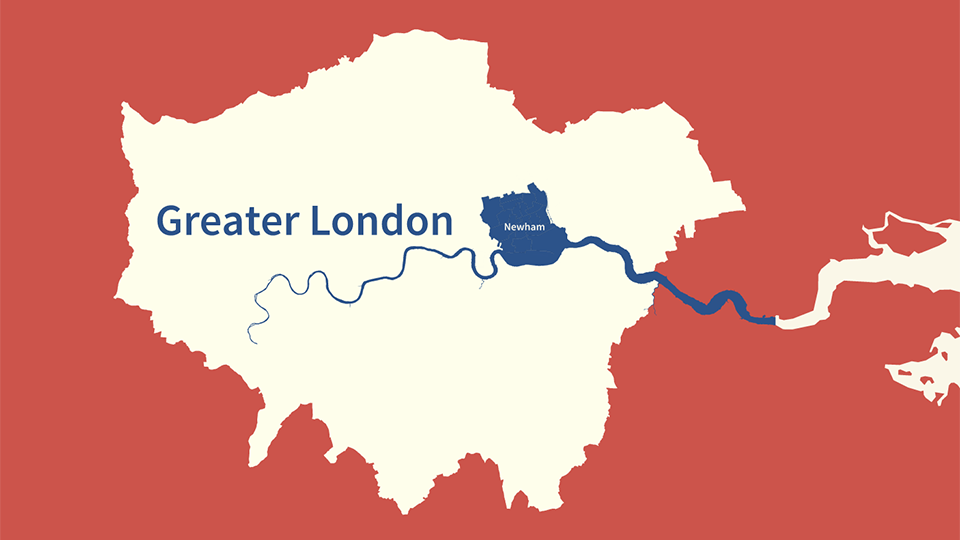Community history preserved through Newham family stories
Primary page content
Histories of Newham and the families who have lived in the area for generations are told through new research from Goldsmiths, University of London.

Disappearing Londoners: Monolingual voices in a multilingual city explores the lives of three generations of four families in a borough that has seen huge changes over the last few decades, including those with ties to the area dating back to the 1800s.
From the oldest residents’ stories about the closure of the docks, to teenage and twenty-somethings embracing the faiths and practices of their multicultural peers, Disappearing Londoners explores the identity and values of the area’s shrinking white working-class demographic. It also addresses the conflict many feel about whether they can and should speak about their experiences of isolation and loss of community.
Led by Professor Emerita Eve Gregory (Department of Educational Studies), the Leverhulme Trust-funded project documents the transition through generations, from manual to non-manual work, and the skills lost and acquired along the way.
Of the oldest generation interviewed (born between 1937 and 1963), most of the men worked in the docks, building or decorating, or at Tate and Lyle sugar factory, while the women who had been cleaners and machinists are now engaged in child minding or as school dinner assistants. For this generation, the closure of the largest docks in the world with the loss of all the jobs dependent upon them was a pivotal moment. For a large proportion of residents it resulted in long-term mental and financial strain and feelings of loss of community as many chose or had no option but to move away.
The oldest and middle generations say they had no opportunity to attend university, but the middle generation were often able to move into secure jobs with the council, police, or in administrative roles. Only the youngest (born between 1998 and 2002) reported that they had benefitted from a choice of work through being able to study. However, their lives have been impacted by other challenges, such as the cost and availability of housing, and they have now moved or are soon to move out of the Borough.
Safety and loss of community were seen as burning issues across interviews, from childhood memories of WWII bombings, to terrible health and safety while working on the docks, to more recent reflections on walking home alone at night or allowing children to play in the street.
In 1980, 81% of the population of Newham defined themselves as white British (The Hansard, March, 1981). By 2011 this had decreased to just under 16%. According to 2011 Census data, 11% of East Ham residents are white British, with this number falling to below 5% in some other parts of the Borough. Newham’s population overall has increased rapidly and is now one of the most diverse in Britain.
Eve Gregory was previously Professor of Language and Culture in Education and Head of the Centre for Language, Culture and Learning at Goldsmiths, a research centre hosting a variety of projects in the field of bilingualism, culture and learning in multilingual London. Her own family history is based in Newham and she lived there for 35 years. The Disappearing Londoners research was conducted between 2017-19 under a Leverhulme Emerita Research Fellowship.
Professor Eve Gregory said: “We know very little about the ways of life, skills and knowledge, views and beliefs, folk stories and memories of this disappearing group who have lived in Newham over generations, sometimes in the same or an adjacent street. All we know is that many have moved away from the area to outer London Boroughs. Why this might be or what life is like for those remaining is a matter for assumption. This project attempts to fill some of that gap in knowledge.”
This portrait of a community is revealed through the voices of participants set within historical and demographic maps, photographs and sketches published on www.disappearinglondoners.co.uk
Designed by artist and web designer Zahir Rafiq, the website represents the identities of participants through household objects, graphic art influenced by old family photographs and landmarks in the Newham area, while otherwise keeping the identities of the participants themselves anonymous.
Disappearing Londoners is led by Professor Eve Gregory with researcher Dr Olga Barradas, photographer Chris Kelly and Community Research Partner Eric Gregory.